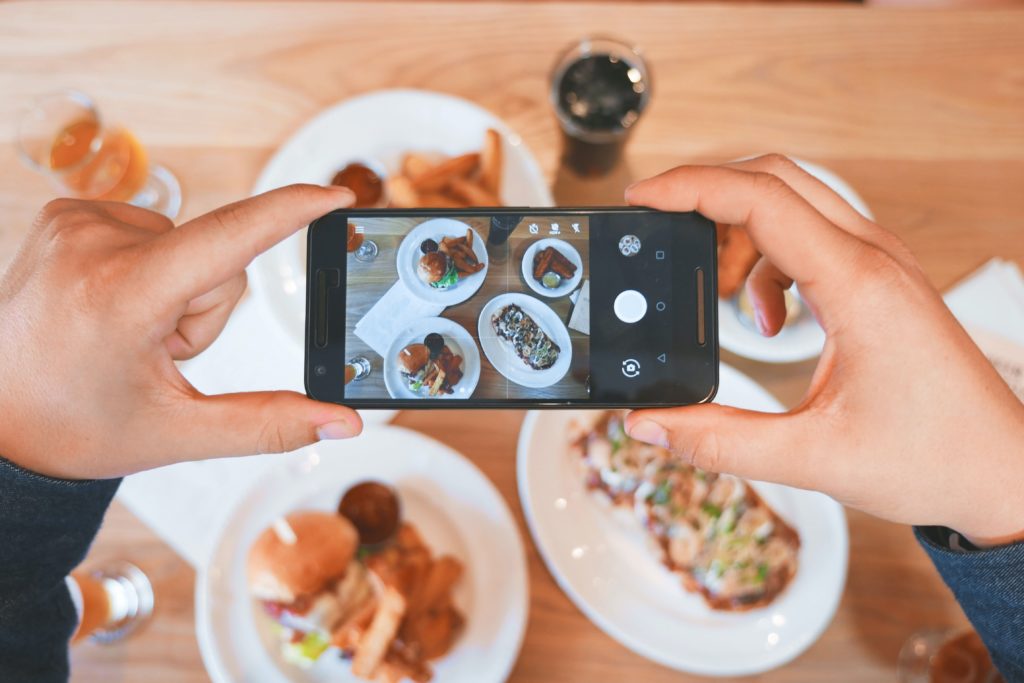Making the Switch to Kegged beverages
If you switch from selling beverages in bottles and cans to selling kegged drinks, you’ll get rid of a great deal of cardboard, bottles, marketing labels, plastic, and materials that go into shipping wines and ingredients. Kegged beverages are a greener approach to operating a business.
Beverages in kegs stay fresh for an extended period of time. Particularly wine can stay fresh for up to two months! In a busy restaurant or a bar, you will go through a keg of wine in just a week or two, so it will never go bad, and you will eliminate a large amount of waste from your establishment.
You can keg practically any beverage of choice with the proper care and attention to detail. However, it is imperative to keep your lines clean regardless of the beverages you serve. Similar to the importance of beer line cleaning, you want to use lines that don’t add flavors to your drinks and won’t corrode over time because of the sugars or fruits in your drinks (particularly in sweet cocktails!). Regular maintenance is a necessity to keep your lines clean and without bacteria. If you want to learn more about line cleaning & maintaining the health of your draft system, you can watch the recording of our webinar on this topic below.
With a wide variety of beverages, we have created this guide to share the process for kegging wine, cocktails, cold brew, and kombucha. Where would you like to start?
How to keg wine
You should be familiar with kegged beer, but what about other favorite beverages like wine? You can keg wine and implement your own wine-on-tap system – it’s an affordable and sustainable option!
Draft wine is essentially wine stored in a keg instead of in a bottle. It is becoming more popular as it is not only more cost-effective and easier on the inventory, but it is also more environmentally friendly as it reduces the use of bottles.
Wine Tapping Equipment
There are two mainstream concepts for drafting your wine — selecting the gas used during kegging and serving the wine. Both ideas are relatively simple and remain cost-effective, but both are essential to the process.
Exposing your wine to different kinds of gas will result in varying tastes across the still and sparkling spectrum. With a gas tank and regulator, still wines typically revolve around argon or nitrogen, and sparkling wines require further exposure to carbon dioxide.
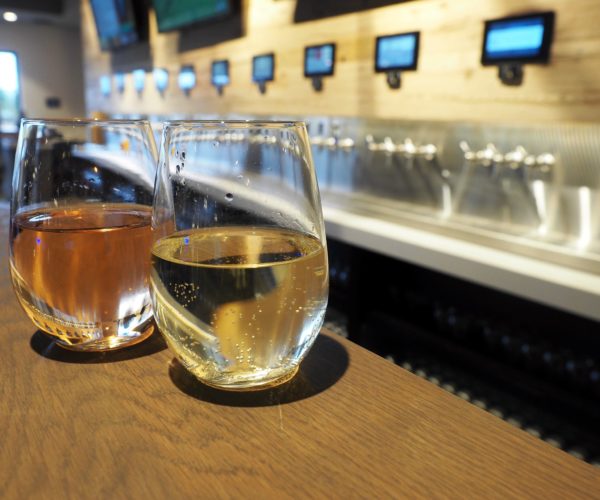
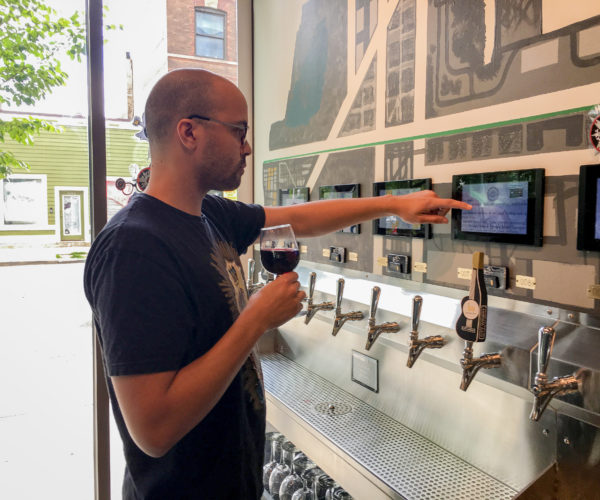
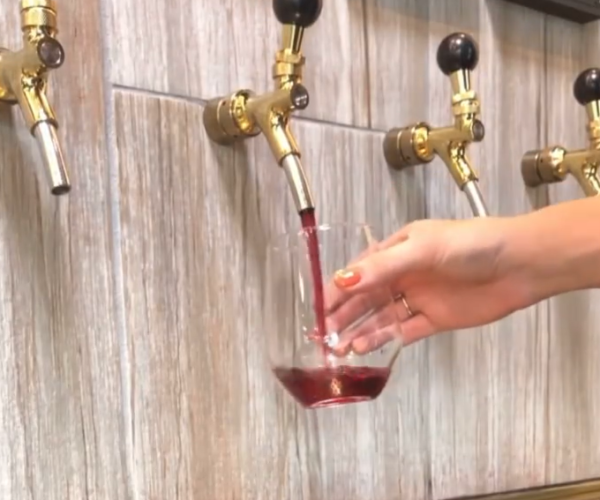
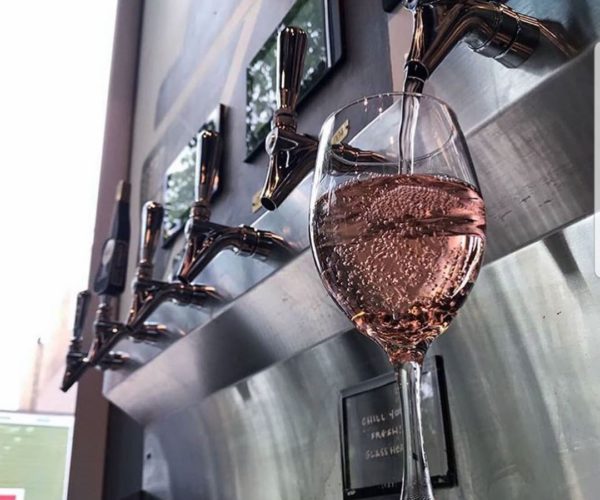
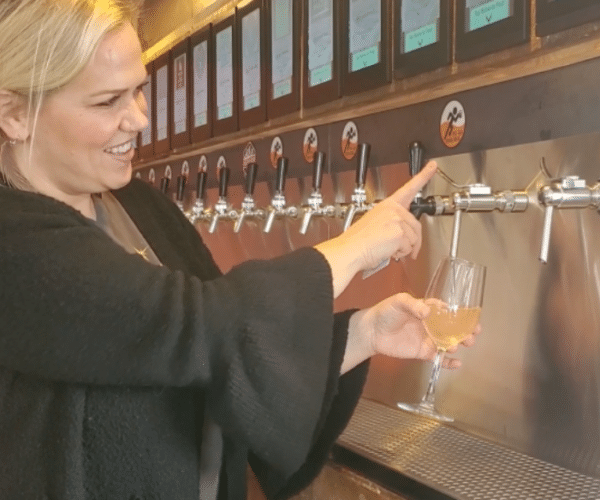
Steps to Kegging Wine
Crafting wine is both a science and an art, so great attention to detail is quintessential. Luckily for you, these days, many wineries sell their wines in kegs thanks to companies like Free Flow Wines that help reduce waste from wine bottles. They create stainless steel kegs for wine and work with wineries and distributors to make the trend of purchasing kegged wine easier & faster for those operators that want to offer the quality that comes with draft wine to their patrons.
If you are unable to find your desired wine in a keg, these steps will allow you to keg a wine you either make or purchase in boxes yourself
- Clean and sanitize the keg: You do not want any bacteria or materials to alter the taste or safety of your wine. Clean stainless steel tanks are ideal for tapping and storing mass amounts of wine.
- Deposit the wine: Siphon your wine into the keg and place a lid on top.
- Eliminate oxygen in the keg: This step is known as “pushing out.” It’s done by connecting a gas disconnect and pushing gas in and out of the keg.
- Listen for gas hissing through the keg: Completing this process several times for good measure is the recommendation.
- Enjoy: Your wine is then ready for serving or further carbonation.
Still vs. Sparkling Wine
Kegs reduce oxidation. Large stainless steel tanks will eliminate the chances of air flowing in and altering the taste of the wine, as they’re sealed airtight. Assuring that taste stays the same each night depends on catering to the types of wine your customers enjoy.
Still wines should be stored cold and within temperatures of 50-55 degrees Fahrenheit (between 10 – 13 degrees Celsius). Sparkling wines require you to force and push gas through kegs to make the drink bubbly. If your customers enjoy sparkling wines, remember to keep yours refrigerated during the process.
Benefits of Kegged Wine
- Taste: Good wine is good wine regardless of how you store it. You can’t make bad wine taste better by storing it in a bottle. Increasingly, we find that quality wineries store as much wine as possible in kegs.
- Storing wine in a keg avoids overheating and oxidation. It also helps the wine to keep its proper flavor. That’s because the wine never touches the air until it is served. It is also less affected by variations in temperatures. When you serve wine on tap, you won’t serve your customers wine from half-empty bottles or bottles that have been stored improperly.
- Efficiency and Environmental Impact: There are two ways in which using draft wine is more efficient and environmentally friendly. Let’s say a restaurant serves 100 wine kegs in a year. A keg contains about 26 bottles. Those 26 bottles include 39 pounds of packaging waste, including the boxes they came in, corks, and foil wrapping, not to mention the bottles themselves. Using kegs means less cleanup, less mess, and more environmental benefits. It is also efficient because when a customer wants to have just a small taste of the wine to see if they want more, it is much easier to serve.
- Cost: In most cases, you can recover the costs of installing a wine-on-tap system within six months. It can cost significantly less to serve a quality glass of wine on tap than from a bottle. Since there is almost no waste with kegged wine, you will save a good amount of money. This will allow you to buy a better quality of wine, and then you can also pass some of the savings on to your customers, which helps ensure repeat business.
Kegging Cocktails
Crafting each cocktail individually becomes very time-consuming for your bartenders or waitstaff. With kegging your cocktails in batches and ahead of time, there’s no need to prepare a mixed drink right on the spot with varying results, which dramatically improves your serving efficiency & simplifies your operations.
In the area of kegging drinks, our customers, aka PourMyBeer family members, have seen some of their biggest success through kegging cocktails. Hear from one of our operators to learn what self-pour Margaritas brought to their business!
Batching cocktails is a very similar process to making a single portion. It takes a few batches to practice to perfect your recipe. Generally, you will want to start by multiplying the ingredients and then slightly adjust the recipe as needed to serve a large crowd. There are important rules to follow if you want to serve any draft drink, which we will dive into below.
PourMyBeer Tip: Always label your keg with the date of when the cocktail was batched as many cocktails infuse citrus blends and other perishable ingredients that can expire rather quickly.
Perfect the recipe for a cocktail before you put it in the keg. Take your time and make sure you get the recipe correct. You’re not serving one drink at a time but instead preparing a recipe for a large number of people. Remember that about one-fifth of every cocktail is actually water that comes from the ice or the way the cocktail is prepared. Generally speaking, you can use a dilution rate of 25-35% for all shaken cocktails (i.e. Margarita, Daiquiri, Bee’s Knees, etc.) and a dilution rate of about 20% for all stirred cocktails (i.e.. Old Fashioned, Manhattan, Negroni, etc.). When you shake a cocktail, you dilute at a faster, heavier rate than when stirred. It may take you three or four times to get this correct, but you and your customers will both benefit in the long run.
Cocktail Kegging Equipment
The process for kegging any cocktail calls for similar equipment as used for storing wine. If kegging cocktails is a proper fit for your bar or restaurant, here’s a look at the equipment you need to get started:
Cornelius keg with ball locks: These kegs come in much smaller sizes compared to the ones used for wine.
Nitrogen/carbon dioxide tanks and regulators: These tanks will give you the option to serve both still and carbonated cocktails on tap
Stainless steel drafting towers: Towers will come into play once you decide where to store your cocktails. Some restaurant layouts call for walk-in storage rooms, while others leave room for drafting towers right under taps.
Steps to kegging cocktails
Just like with wine, you can usually purchase a kegged cocktail from your distributor (depending on your state’s regulation). If you choose to make your cocktails in-house, which we highly recommend for a higher profit margin, you must follow these steps:
⦁ Clean and sanitize the keg system: You don’t want any bacteria or materials to alter the taste or safety of your concoctions.
⦁ Start mixing your ingredients following your recipe: batching cocktails is not as simple as just multiplying all the ingredients. You will have to play around a bit and tweak your recipe as needed
⦁ Date the keg with the date of batching & closing the keg: this is important to ensure that the older kegs are getting tapped/used first, and it is handy to have the kegs labeled with the date for the health department.
PourMyBeer Tip: If you want to serve fresh, enticing draft cocktails, strain the juices. If you do not, the pulp will settle at the bottom of the keg, and the first cocktails poured will taste different than those poured toward the end of the keg.
Keep in mind that most cocktails are served at cold temperatures. Still cocktails will give you room to play with storage temperature, but carbonated drinks should remain in a storage location of about 38 degrees Fahrenheit.
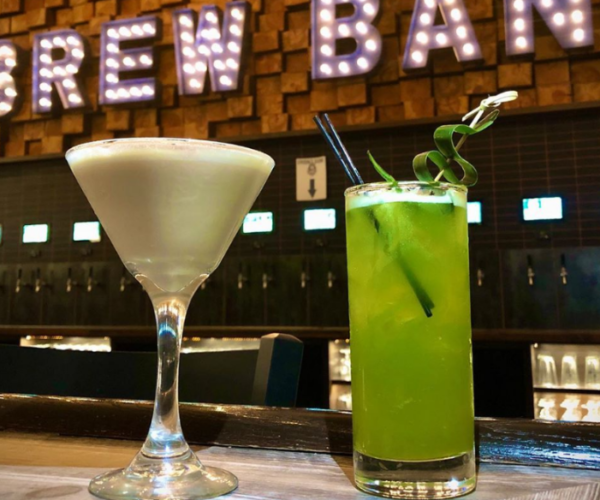
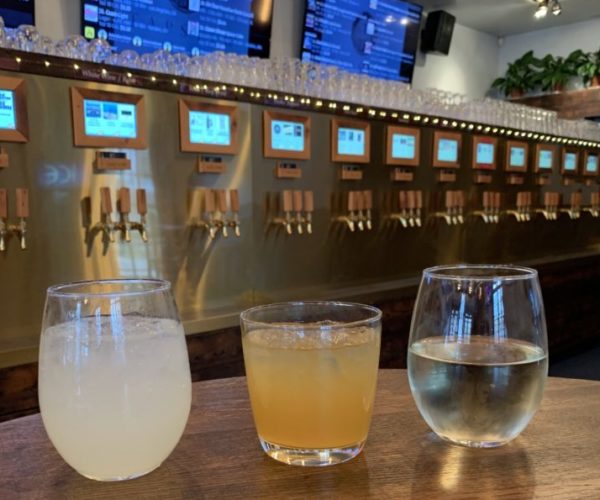
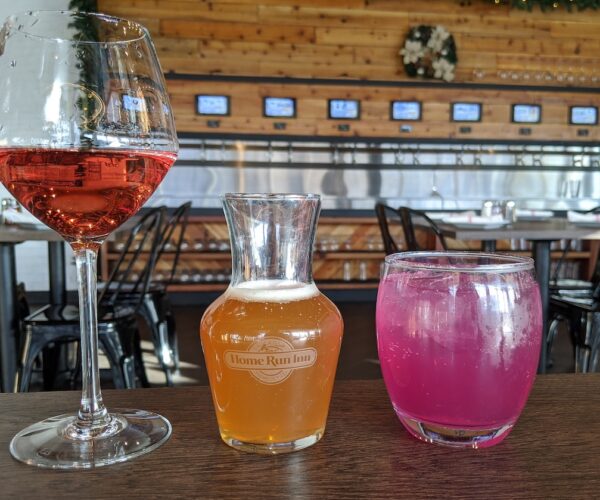
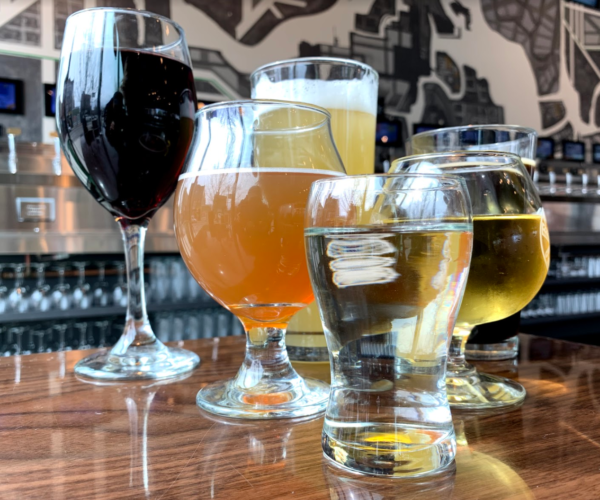
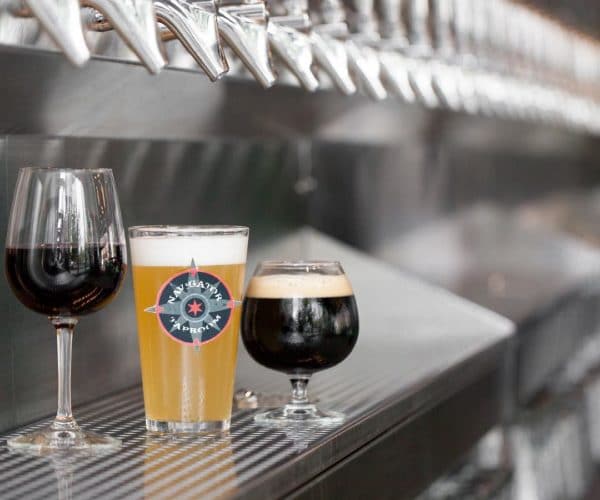
Benefits of Cocktails on Tap
Some of the main benefits of serving cocktails on tap include:
- More consistency in the cocktails’ taste: since all cocktails come from one keg (the same source), patrons will get a consistent drink each time. With self-pour technology, each pour will taste the same.
- The establishment can serve more drinks faster than making each one individually. Making a pretty and more elaborate cocktail can take a professional bartender up to 2 – 3 minutes. When the bar gets busy, the ability to pour a cocktail from a keg in a matter of a few seconds allows for much faster service. Better yet, with self-pour technology, the speed is even faster as the guests serve themselves.
- Cost savings on packaging and storage: with kegged cocktails, the establishment saves a great amount of packaging and bottle handling. It also takes less time to switch one keg during the entire night compared to opening many new bottles and safely dispensing the old ones.
- Easier for customers to sample cocktails: in a traditional bar setup, it is virtually impossible for a customer to sample a cocktail. With kegged cocktails, bartenders can provide a little sample. Even better, with self-pour technology, guests pay for that sample themselves and do not require any help from the bartenders to taste.
To access a book full of batched cocktails, click the button below! Our Cocktail Recipe Book will help you become a batched cocktail pro in no time!
Kegging Cold Brew
If you want to serve coffee on tap, cold brew is the way to go! Cold brew coffee maintains a consistent flavor profile over time and can be stored in a keg for up to three weeks without losing any of its initial flavors. The chemistry of cold brew coffee doesn’t change as it cools because it’s never been hot in the first place — that’s why its taste remains fresh for weeks. Coffee concentrate produced from cold brewing can be 70% less acidic than hot brewed coffee, which makes it easier on your stomach and teeth. You can also keg iced coffee and nitro brew coffee if you know how to keg cold brew.
How to Keg Cold Brew Coffee
When you’re crafting cold brew, you only need two things: coffee grounds and a simple cold brew system. Just like with wine, it is not very common for operators or their employees to keg their cold brew as it is now readily accessible through distributors. If you do choose to make your cold brew in-house, here are the main steps:
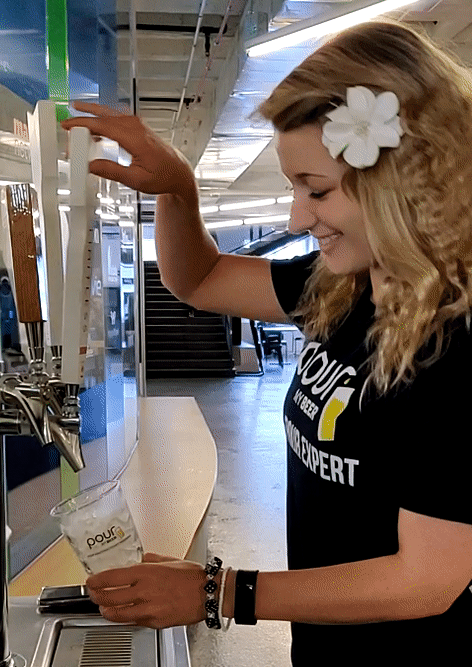
- Mix ingredients: Combine coffee grounds and water inside your simple cold brew system. Let this mixture sit for 12 to 24 hours at room temperature.
- Drain: Siphon the coffee concentrate through the filter into your container
- Store in a cool place: Refrigerate the coffee concentrate for two to four weeks.
- Serve and enjoy: Before serving, dilute with water. You can do so by heating water in a teapot before pouring one-third cup of coffee concentrate into a two-thirds cup of hot water from the teapot.
Benefits of Kegging Cold Brew Coffee
There are many benefits to learning how to keg cold brew coffee, including:
- Adding freshness: Cold brew’s contact with air is restricted after being sealed in a keg. This setup slows the oxygenation process responsible for flavor changes and allows the cold brew to stay fresh for three weeks.
- Boosting efficiency: When you keg cold brew coffee, you’ll be able to serve more customers in a shorter amount of time and with less hassle.
- Allowing for kegging nitro cold brew: You also have the choice of nitro brewing draft coffee. Kegging nitro cold brew requires the right kind of pressure and a faucet. Nitro cold brew creates a rich, velvety texture with a creamy head.
Cold Brew Coffee vs. Nitro Cold Brew
Cold brew coffee and nitrogen cold brew differ in taste and texture. Cold brew coffee tastes less acidic than hot coffee because it’s brewed with cool water. The heat pulls the intense, aromatic chemicals out of coffee beans, making them acidic and slightly bitter. Cold brew, on the other hand, is milder, sweeter, and less acidic than average coffee. Unlike average coffee, cold brew coffee retains its freshness over time and requires about twice the amount of coffee grounds as traditional coffee. For this reason, cold brew can cost anywhere from 50 cents to a dollar more than regular iced coffee.
Even though cold brew coffee wasn’t on menus five or ten years ago, it has gained popularity in recent years in restaurants, grocery stores, and coffee shops across the U.S.A. Nitrogen cold brew delivers a rich, smooth body with a foamy top, similar to beer. To make a nitrogen cold brew, you need to first make cold brew coffee and pour it into a keg. It’s then infused with nitrogen bubbles and routed through a pressurized valve.
Nitro cold brew drinks tend to be pricier due to the expensive equipment needed to make them, but they can offer several benefits. Nitro cold brew offers a creamy, adventurous taste and doesn’t require all the added creamers and sweeteners of regular coffee. This difference is great if you’re hoping to cut down on sugar or try something new and exciting.
Kegging Kombucha
Kombucha is one of the fastest-growing commercial beverages on the market today. According to a report by Grand View Research, it’s expected to grow by 23% through 2025. Kegging kombucha seems to be the most efficient solution to its rise in popularity. Doing so saves time and requires less packaging. You’ll have the option to force carbonate the batch to your tastes rather than relying on priming and conditioning sugars.
Kombucha Tapping Equipment
To keg and carbonate kombucha, use a 5-gallon Cornelius keg. The next step before you can pour kombucha is to hook it up to a draft system.
Required equipment for a draft system includes the following:
- CO₂ tank and regulator
- Airline
- Barrier tubing
- Draft tower with entirely stainless steel contacts, including faucet and shank
How to Keg Kombucha
Similarly to cold brew coffee above, buying kombucha in a keg is now readily available through many distributors, so check with those in your area to evaluate your options before diving into the process of kegging kombucha yourself. If you do decide to keg your own kombucha, you’ll first need to learn how to properly keg it:
- Filter your kombucha to remove excess ingredients: Eliminate any SCOBY, sediment from yeast, and any flavoring agents that might build up in the coupler or lines and cause foaming issues in the future.
- Add your kombucha to a keg: Add kombucha to a new or refurbished 5-gallon Cornelius keg after the first fermentation.
- Allow your kombucha to carbonate naturally: Add sugar or force carbonate your kombucha to taste with CO₂. To force carb your kombucha, chill your keg to 38 degrees and then hook up to CO₂ at a PSI between 20 and 30. Let it sit at this high PSI until it reaches your desired carbonation level. This process may take up to four or five days.
- Hook up to a draft system: Once you’ve kegged and carbonated your kombucha, you need to hook it up to a draft system.
- Pour kombucha: You can use a kegerator or a compact refrigerator with direct-draw dispensing equipment for up to two kegs- corny or pony kegs. Or, you can use a draft system with a more significant number of taps or a long-draw system for commercial clients. If you decide to use a long-draw system, glycol-cooled or air-cooled lines are essential to ensure the kombucha’s temperature is maintained from keg to faucet.
- Store your product: You can store kegs of kombucha and dispense at 38 degrees. Kombucha will more easily take on carbonation at this temperature. You’ll have foaming issues if the temperature rises above 42 degrees.
- Enjoy: Pour kombucha at a PSI between seven and ten. Use 100% CO₂.
Drinks Served on Tap
There are probably more drinks to serve on tap than you initially thought possible. The food and beverage industry is approaching a time when consumers are looking for the latest ways to enjoy their food and drinks. Serving beverages from kegs significantly cuts down on employee time spent, and customers can grow interested in the idea of pouring their drinks in a matter of seconds.
Aside from wines and cocktails, PourMyBeer is introducing the means to tap other beverages, including mocktails, seltzers, iced teas, and craft sodas. If your customers demand mixed drinks, you’ll be happy to know that you can serve a variety of draft cocktails. From Daiquiris and Tonics to Manhattans and Margaritas, the options are endless.
Why Should I Consider Tapping Beverages?
Incorporating the ability to tap your beverages will keep customers happy, products fresh, and the experience unique. If you’re resistant to tapping technology, perhaps it’s time to reconsider what makes this system so impactful.
Working with PourMyBeer, you’ll find that we carry the determination to eliminate waste. Additionally, kegs stay fresh for an extended time. Depending on the beverage, some refreshments, such as wine, remain fresh in tapping storage for up to two months. In a restaurant, you can go through that amount of wine in a shorter time.
Cutting Costs and Keeping Flavor
Kegging your beverages will ultimately allow you to simplify your operations, reduce product waste, and speed up your service.
If you want to take the benefits of kegged drinks a step further by installing self-pour technology, most restaurants can make up for the costs to install a self-pour beverage wall within just six months or so! You can learn more about that by reading our case studies.
Getting Involved With PourMyBeer
There’s nothing better than a full crowd enjoying their night out on the town while making new memories within your bar or restaurant. Hard work goes a long way toward making their night enjoyable, but what if you gave your customers a great experience they couldn’t forget? Of course, we’re talking about PourMyBeer and our self-serve beverage capabilities.
You can free your team from running around to refill refreshments to refocus efforts on customer service and engagement. With the help of a few “splash-proof” tablets and our tap technology, customers can have fun while they drink at your bar, venue, or restaurant.
PourMyBeer is ready to assist you in transforming your bar or restaurant. With just a few tablets and installations, you can revolutionize the customer experience. If you’re interested in learning more about our products and systems, visit our FAQ page for additional information. Or get in touch with our team at (312) 416-9989 or cheers@pourmybeer.com.






